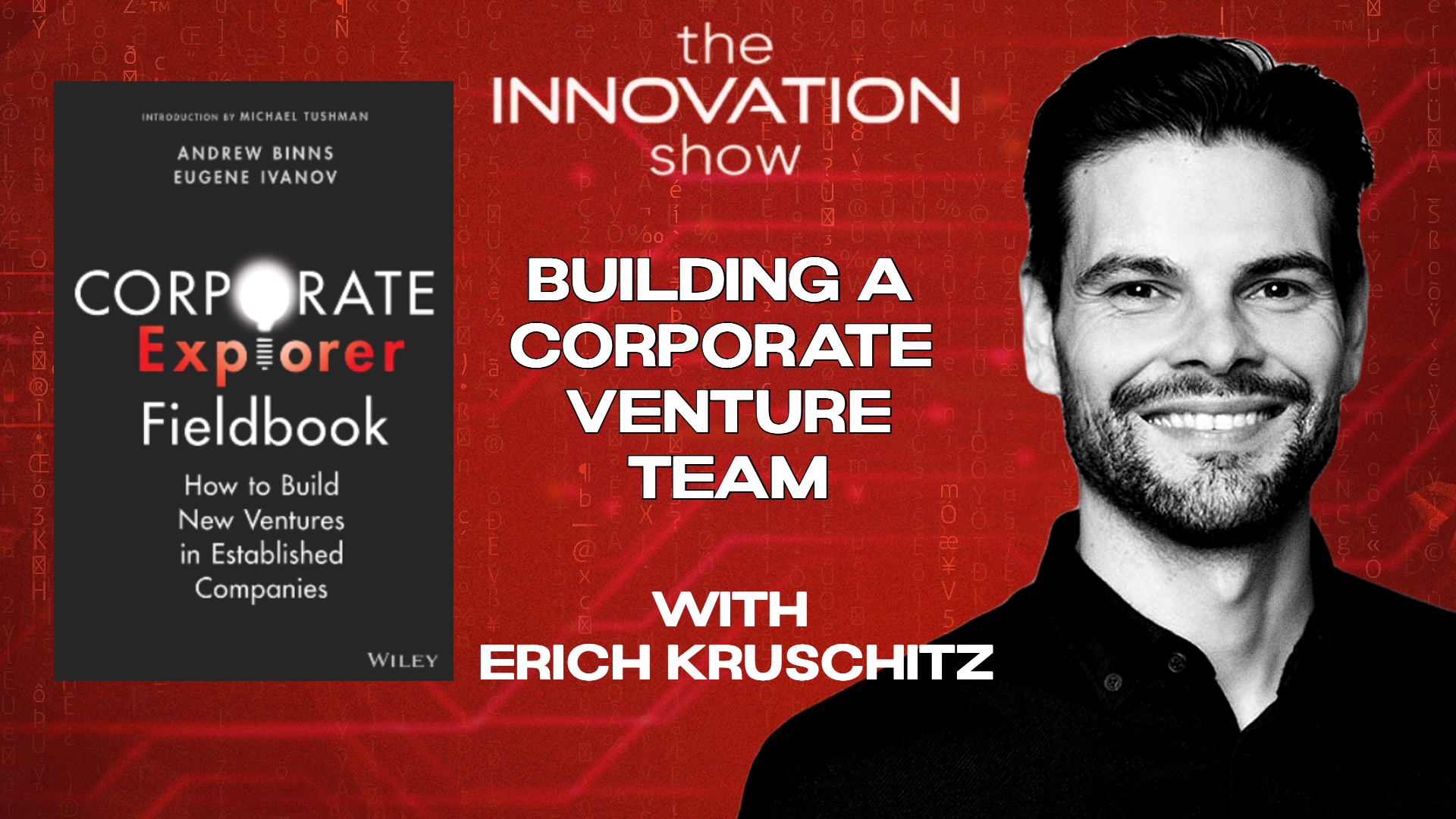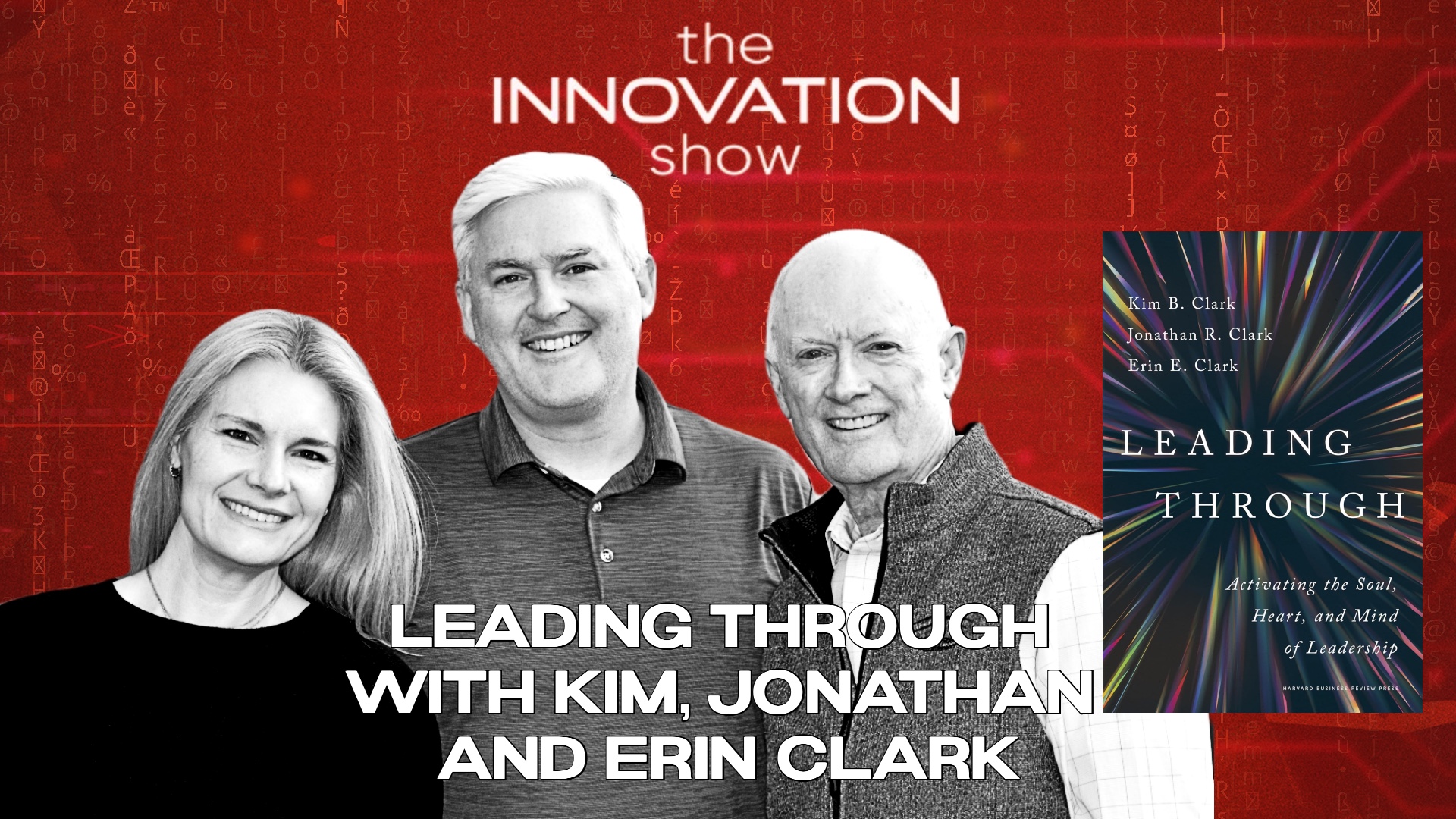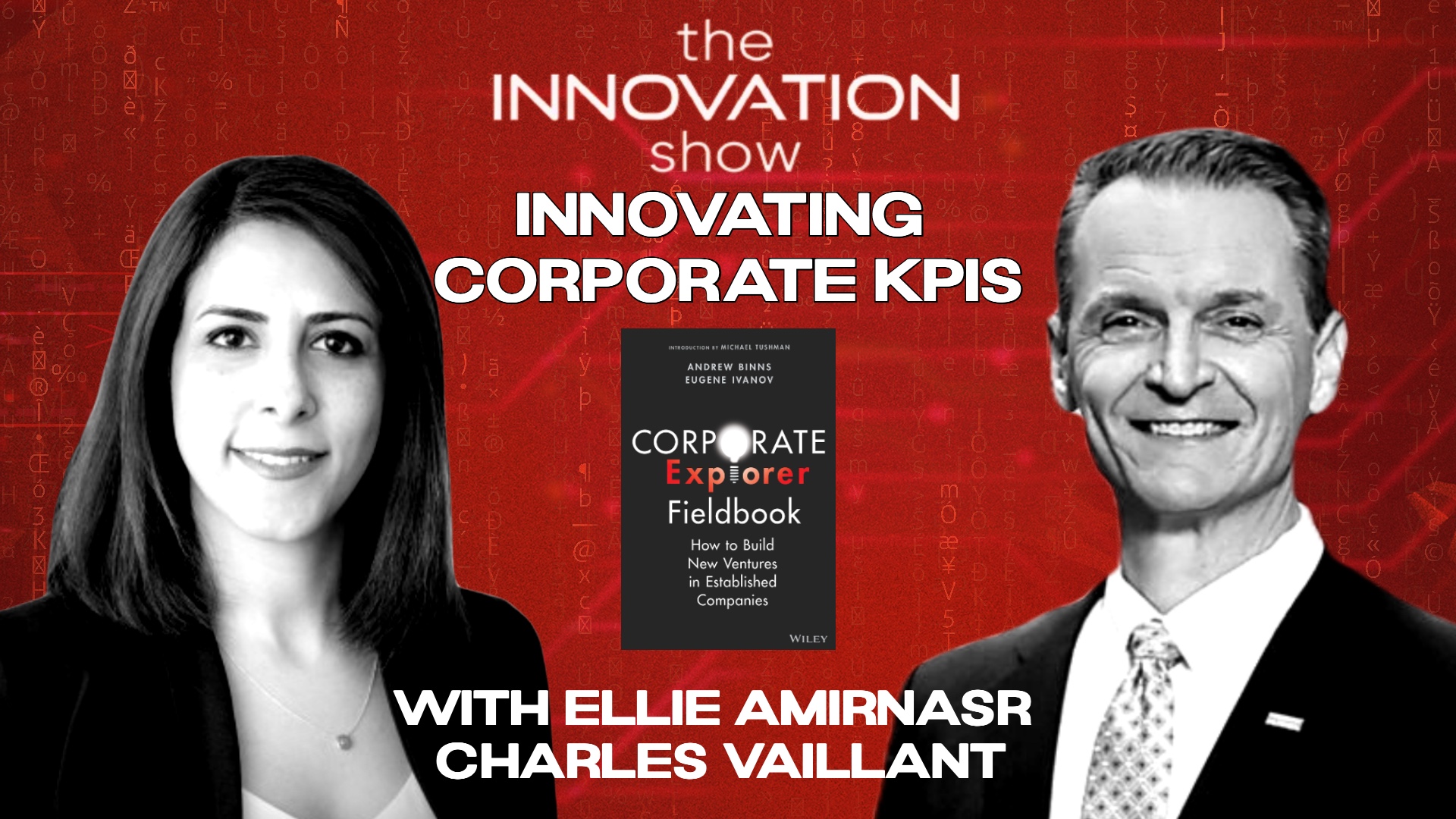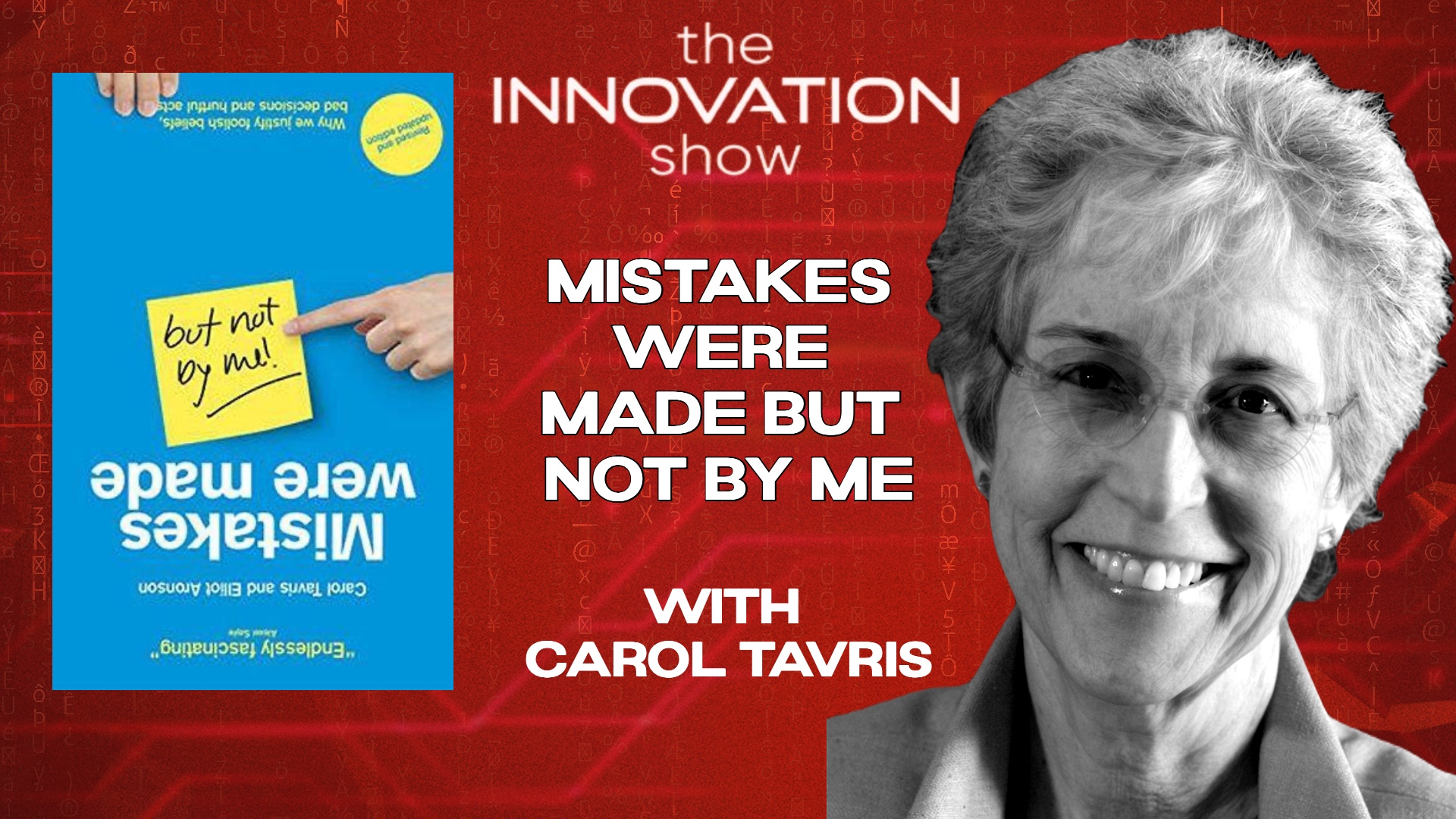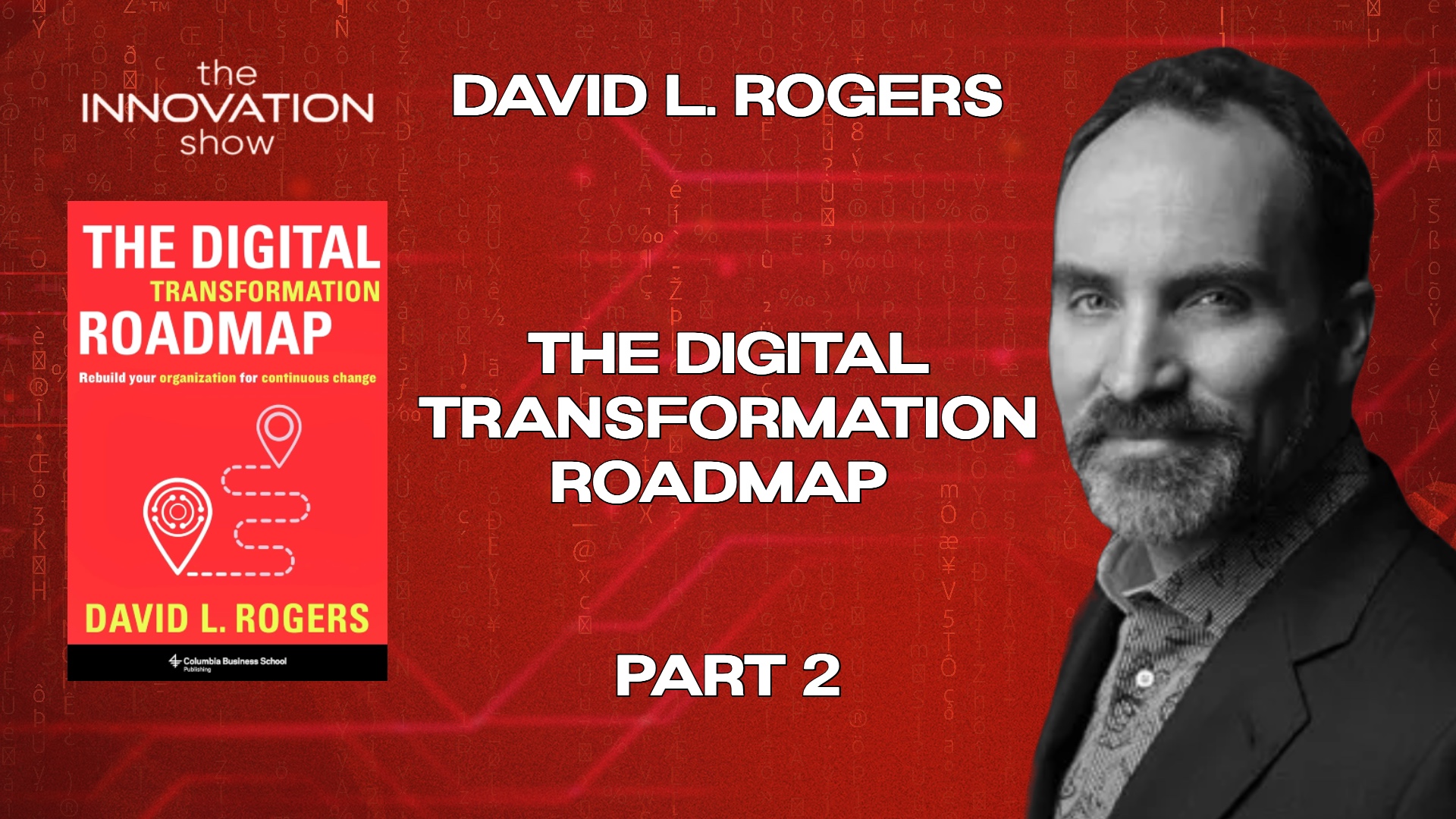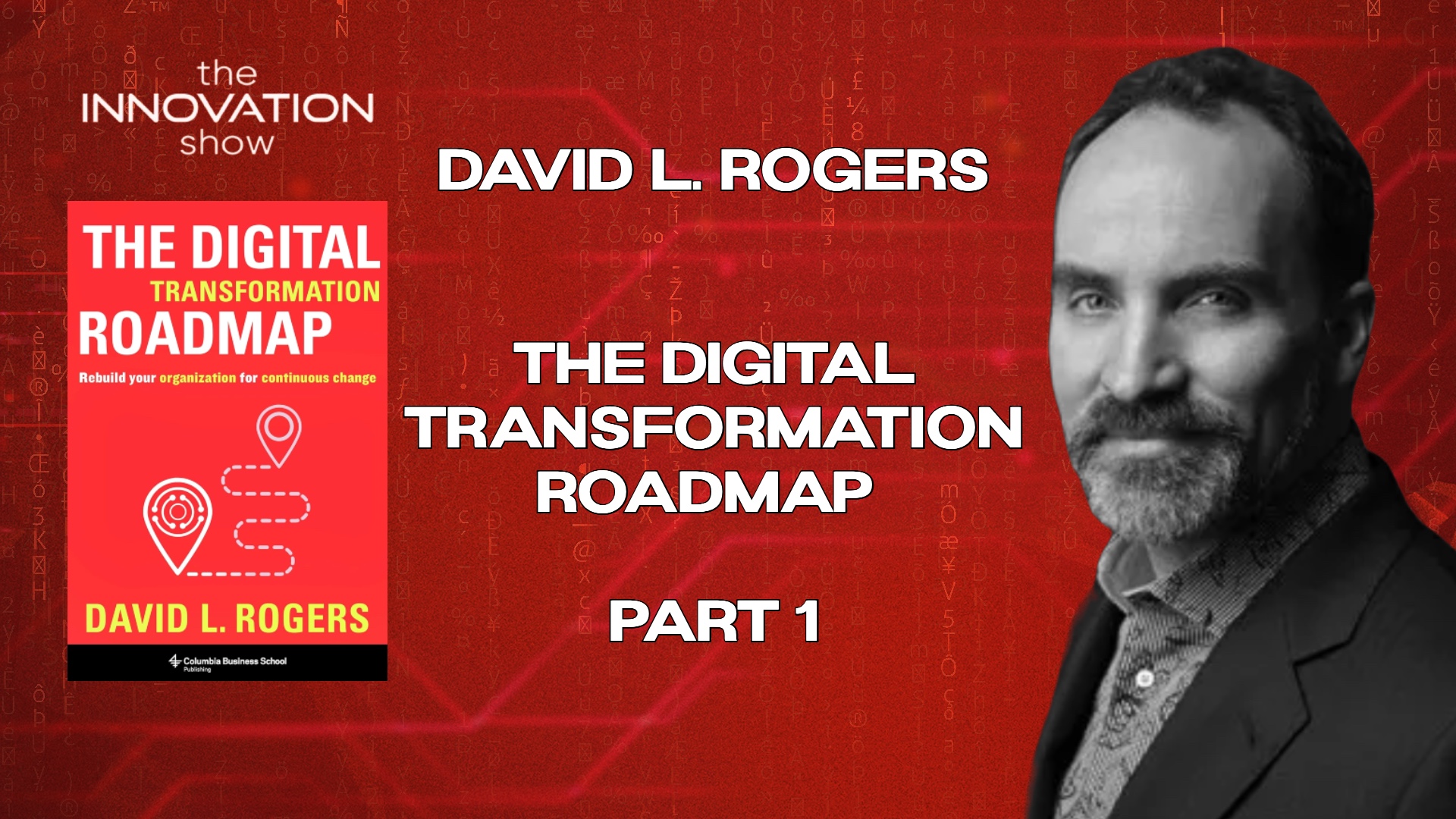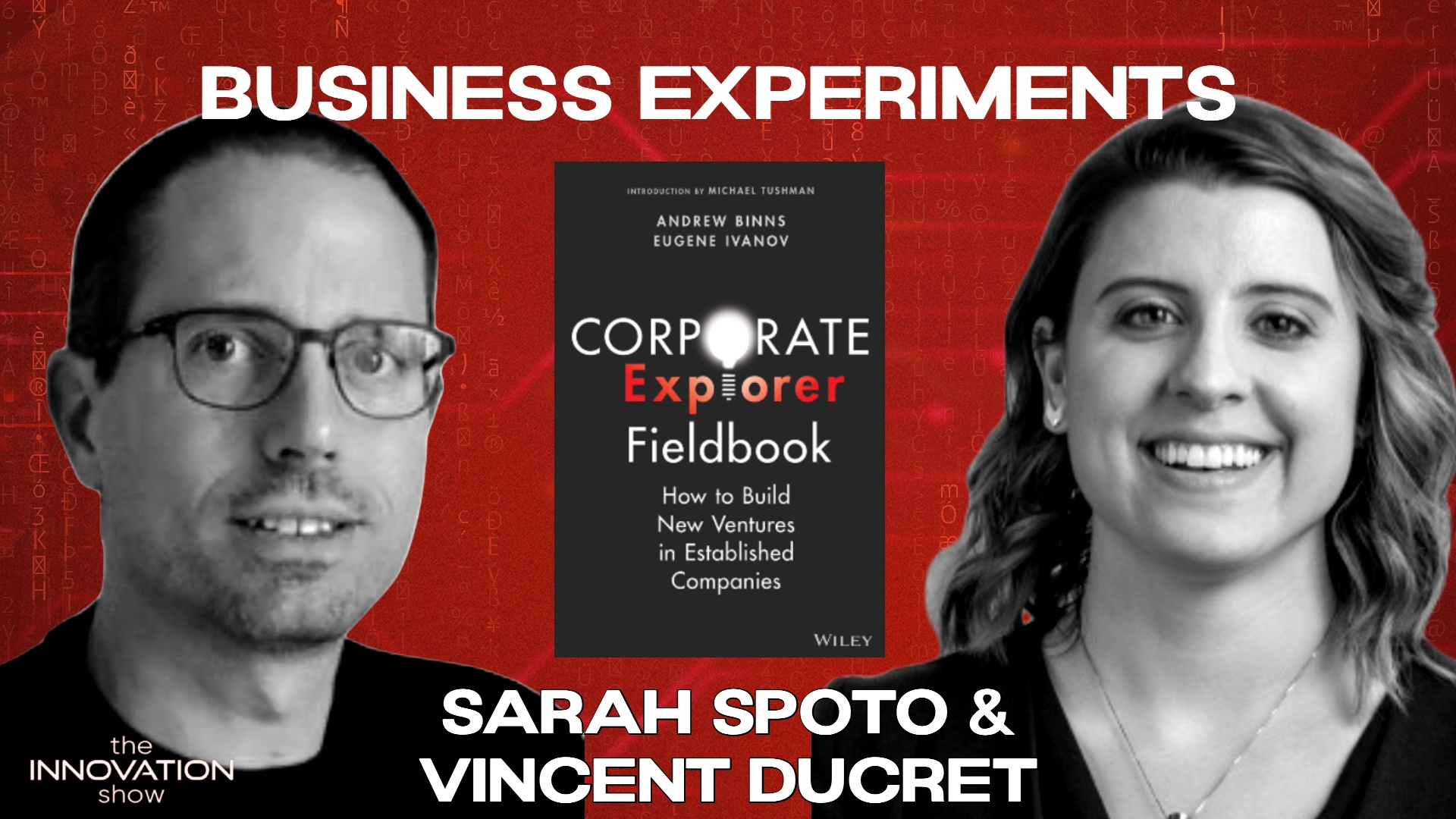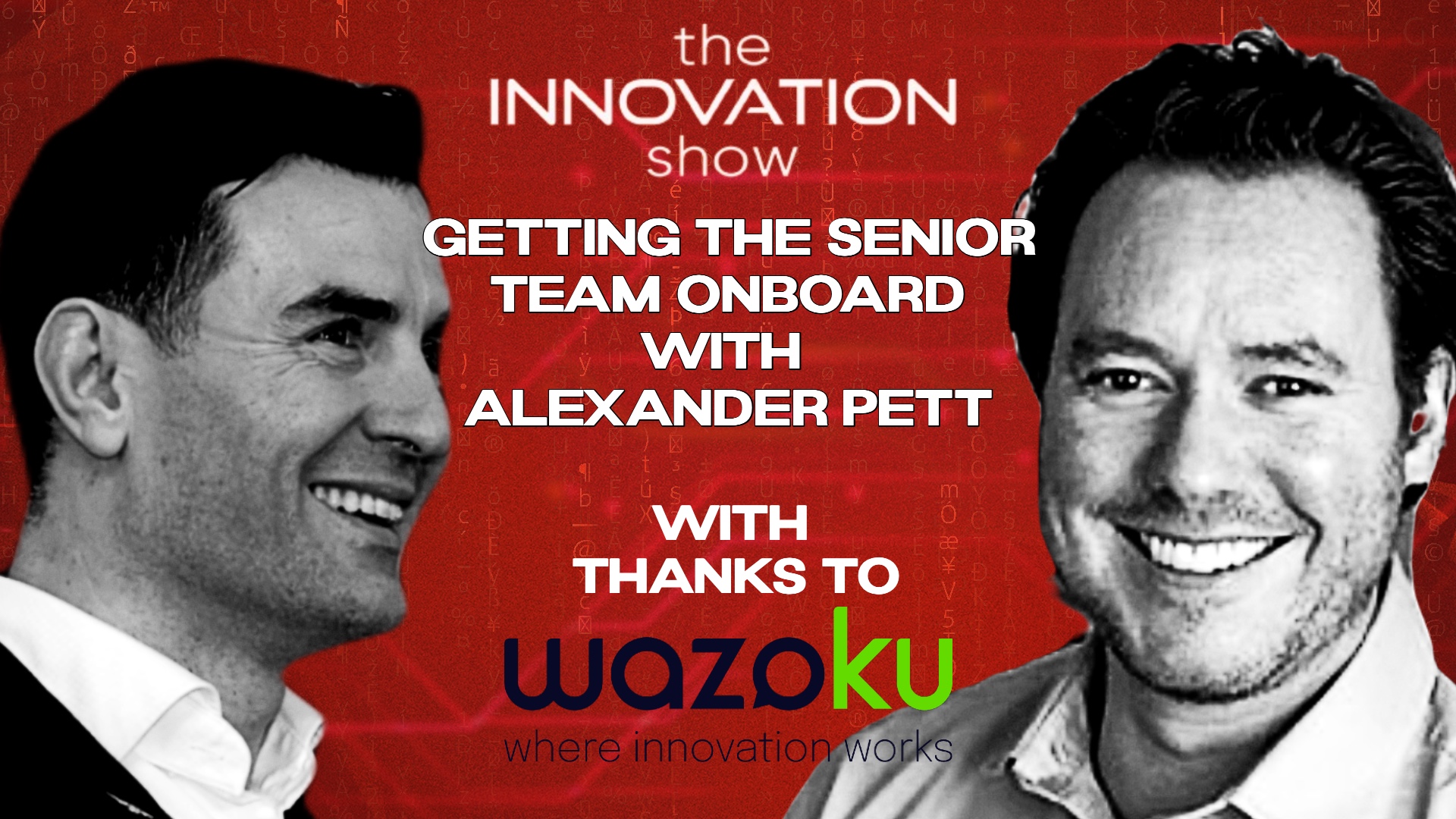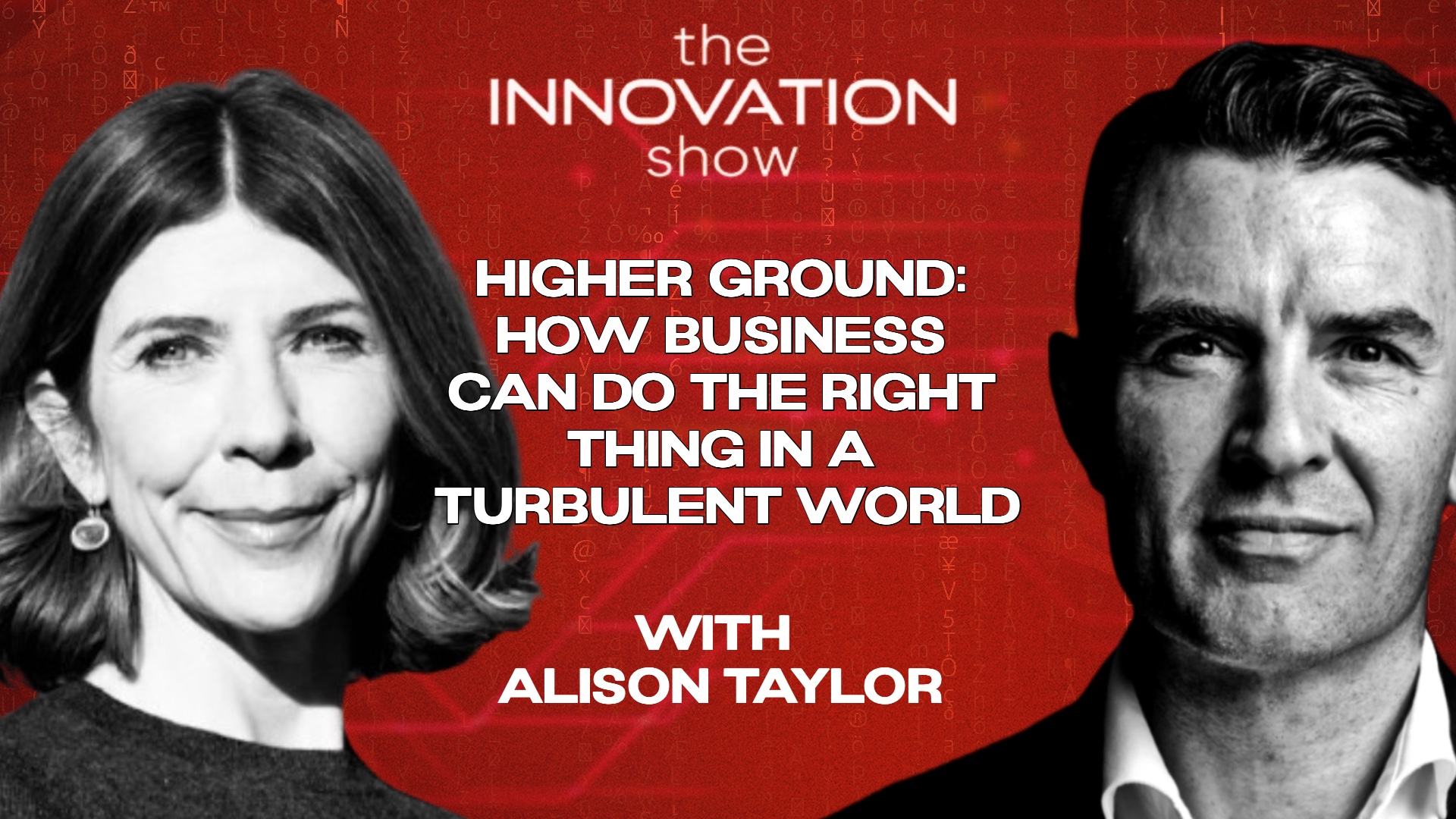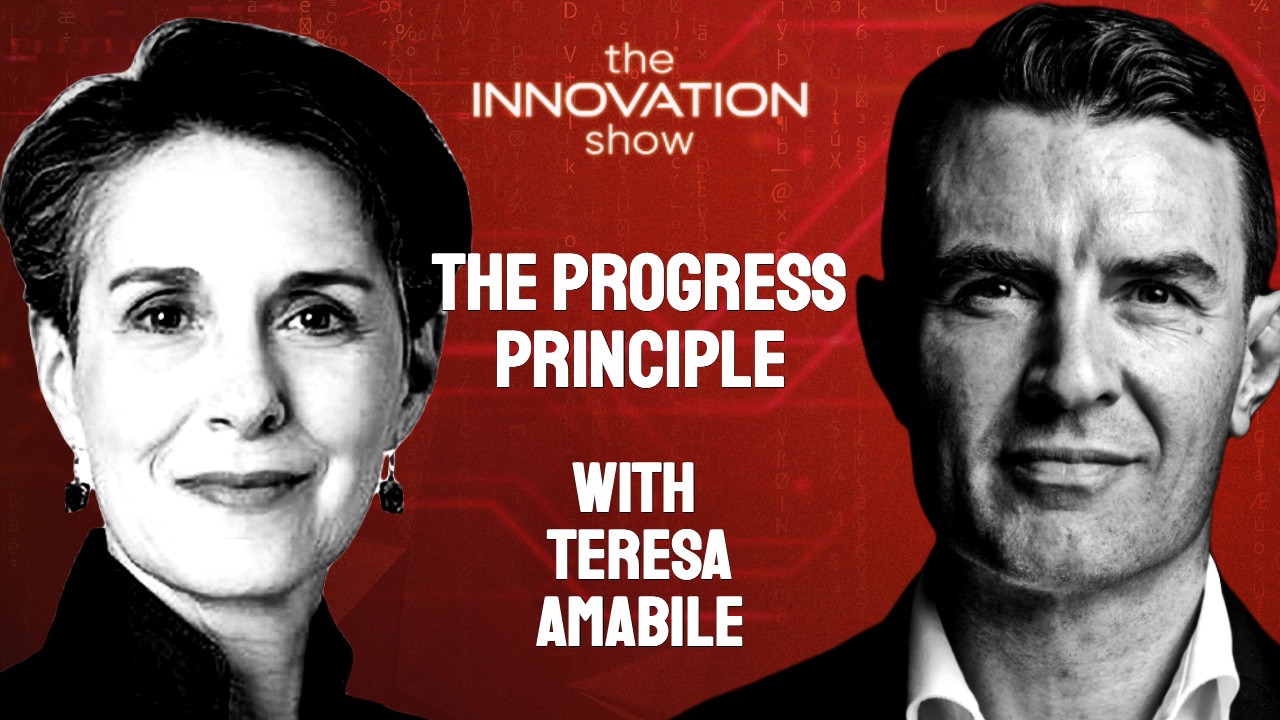Join Erich Kruschitz, CEO of Mavie Next, as he reveals how he transformed UNIQA’s exploratory unit into a growth engine. Explore key strategies for managing innovation in large corporations, from team building and goal setting to navigating acquisitions and celebrating failures. Ideal for corporate strategists and innovators.
Posted 1 year ago Tagged Aidan McCullen Bureaucracy Business Strategy Employee Empowerment Employee Engagement Erin Clark Harvard Business School Human Potential Innovation Jonathan Clark Kim Clark Leadership Leading Through Management Consulting Modularity New Paradigm Organizational Change Organizational Transformation Power Over Paradigm professional development Workplace Culture
In this episode, we delve into a profound moment of opportunity in human history, examining how organisations can harness leadership to help people and communities thrive. The discussion centres on the new book, ‘Leading Through: Activating the Soul, Heart, and Mind of Leadership,’ authored by Kim, Jonathan, and Erin Clark. The Clarks share their experiences from diverse fields to propose a shift from the outdated power-over paradigm to a more human-centric, flexible, and adaptive way of leading. Topics covered include the challenges and potential of the new paradigm, real-life examples from the authors’ professional journeys, and the enduring need for empathetic leadership even in the face of daunting organisational inertia.
Posted 1 year ago Tagged Aidan McCullen Business Innovation Charles Vaillaint Corporate Exploration Corporate R&D Corporate Transformation Digital Ventures Ellie Amirnasr Growth Validation Hunter Strategy Innovation Ecosystems Innovative Processes KPIs Mann and Hummel Non-Financial KPIs R&D Investments resource allocation Strategic Metrics Venture Management Wazoku
Ellie Charles Mann Hummel
Innovating Corporate KPIs – Ellie Amirnasr and Charles Vaillant
Driving Progress with Mann+Hummel’s Hunter Strategy
In this episode of the Corporate Explorer series, we dive into innovative business practices with Mann+Hummel’s CTO/CDO Charles Vaillant and Digital Ventures Manager Ellie Amirnasr. The guests discuss the pitfalls of applying traditional KPIs too early in new business ventures and advocate for non-financial progress metrics. They introduce the ‘Hunter Strategy’ for pursuing business validation and scaling within exploration-type projects. The conversation covers how to manage resource allocation efficiently, the evolution of their innovation framework, and essential advice for corporate explorers. This episode is sponsored by Wazoku, a leader in creating sustainable innovation ecosystems.
00:00 Introduction to Business Innovation
01:10 Sponsor Acknowledgment
01:49 Meet the Guests: Ellie Amirnasr and Charles Vaillant
02:54 Understanding Mann and Hummel
04:56 Challenges with Traditional Metrics
10:54 Hunter Strategy Explained
17:21 Implementing Effective Metrics
23:59 Resource Allocation in R&D
30:18 Advice for Corporate Explorers
34:47 Conclusion and Final Thoughts
Business Innovation, KPIs, Venture Management, Non-Financial KPIs, Innovation Ecosystems, Corporate Exploration, Growth Validation, Hunter Strategy, Mann and Hummel, Wazoku, Aidan McCullen, Ellie Amirnasr, Charles Vaillaint, Corporate R&D, Digital Ventures, Strategic Metrics, Innovative Processes, Resource Allocation, R&D Investments, Corporate Transformation
Find Charles: https://www.linkedin.com/in/chvaillant/
Find Ellie: https://www.linkedin.com/in/ellie-amirnasr/
Find Aidan: https://www.linkedin.com/in/aidanmccullen/
Posted 1 year ago Tagged Aidan McCullen alien abductions Antonin Scalia Auburn Blooming Carol Tavris Clarence Thomas Cognitive Dissonance confirmation bias decision making Elliot Aronson Ethics Humility Innovation interrogation James Thurber Jeffrey Cohen John Mack Joseph Allen law enforcement Leadership Lee Ross Leon Festinger Louis C.K. Mary Carr memory mistakes Psychology Rich McNally Richard Feynman Ronald Reagan Sarah Silverman self-concept self-justification Shimon Peres Susan Clancy Transformation trauma wrongful convictions
Why We Can’t Admit We’re Wrong: A Deep Dive with Carol Tavris
Have you ever clung to a belief even when faced with overwhelming evidence to the contrary? You’re not alone! In this episode, Aidan McCullen chats with renowned social psychologist Carol Tavris, co-author of the groundbreaking book “Mistakes Were Made (But Not by Me).”
Together, they delve into the fascinating world of cognitive dissonance, self-justification, and memory. You’ll discover:
Why admitting mistakes is so darn hard (even for the best of us!)
How our memories can be surprisingly malleable
Real-world examples from law enforcement, politics, and even parenting
How these insights can help us all be more humble, critical thinkers
This episode is a must-listen for anyone who wants to understand the human tendency to rewrite history and the importance of embracing the possibility of being wrong.
Posted 1 year ago Tagged Agile Methodology Aidan McCullen Business Validation Corporate Innovation Customer Validation David L. Rogers Digital Transformation Roadmap Book Interview David Rogers Digital Transformation Executive Insights Innovation Boards Innovation Governance Innovation Stack Innovation Strategy Iterative Funding Organizational Change Product Validation Psychological Debt Smart Shutdowns Startup Culture Strategic Priorities Technical Debt
Aidan and David Rogers, the author of ‘The Digital Transformation Roadmap’ delve into the significant challenges and strategies for digital transformation within organisations. Key topics include overcoming psychological and organisational debt, technical capabilities required for transformation, the importance of suitable technology, retaining key talent, and evolving organisational culture. David also shares insights on governance and iterative funding, emphasising the need for smart shutdowns and resource allocation. The episode is packed with practical examples, including successful digital transformations at Walmart and Netflix. David’s profound experience and practical tools make this essential listening for business leaders and innovators.
Posted 1 year ago Tagged Aidan McCullen Bob Dorf CNN Plus corporate governance David Rogers digital transformation playbook digital transformation roadmap Facebook iterative experimentation Jason Keillar Jeff Zucker media industry New York Times Peter Thiel Rita McGrath startup funding Stefan Tompkin Steve Blank
Unlocking Successful Digital Transformation: Insights from David L. Rogers
In this episode, David L. Rogers, author of ‘The Digital Transformation Roadmap’ and ‘The Digital Transformation Playbook,’ joins Aidan to discuss the critical steps and challenges businesses face in their journey towards digital transformation. Rogers emphasises the importance of transforming not just products and business models but the organisation itself.
He outlines five major barriers to success: vision, priorities, experimentation, governance, and capabilities.
Through insightful case studies such as the New York Times and CNN+, Rogers illustrates the pitfalls and successful strategies for driving meaningful innovation.
Additionally, he highlights the need for iterative funding and continuous adaptation in the face of uncertainty. This episode is packed with practical advice and lessons drawn from two decades of research and real-world examples, aimed at helping leaders navigate and thrive in the digital age.
00:00 Introduction to Digital Transformation
00:57 Meet the Author: David L. Rogers
01:47 The Evolution of Digital Transformation
02:36 Challenges and Misconceptions
07:48 Defining Digital Transformation
09:56 Barriers to Success
22:26 Case Study: The New York Times
31:33 Setting Realistic Expectations for Change
32:21 Defining a Clear Vision for Change
34:03 Empathy and Resistance to Change
34:53 Challenges of Corporate Innovation
36:15 Addressing Uncertainty in Innovation
39:27 Paths to Innovation and Growth
41:41 Case Study: The Failure of CNN Plus
49:55 Iterative Funding and the Facebook Example
54:44 Conclusion and Final Thoughts
Find David here:
Substack: http://davidrogersdigital.substack.com
Website: https://davidrogers.digital
The Missing Link Between Strategy and Innovation article David mentioned:
https://hbr.org/2024/03/the-missing-link-between-strategy-and-innovation
The episode we mentioned with Steve Blank:
The Startup Owner’s Manual: The Step-By-Step Guide for Building a Great Company
https://youtu.be/JbPRE2oCjnY?si=S0ULzjFLdnsU-1Ix
Aidan McCullen, David Rogers, digital transformation roadmap, digital transformation playbook, corporate governance, iterative experimentation, Facebook, CNN Plus, startup funding, media industry, New York Times, Steve Blank, Bob Dorf, Rita McGrath, Stefan Tompkin, Peter Thiel, Jason Keillar, Jeff Zucker
Posted 1 year ago Tagged Aidan McCullen assumption analysis business decisions business experimentation framework Cadillac celebrating failures China Connected Collective Intelligence corporate experimentation cultural buy-in customer experience data-driven innovation electric vehicles General Motors Innovation Management iterative experimentation prioritizing hypotheses Sarah Spoto strategic risk-taking Vincent Ducret Wazoku
Stop Relying on Gut Feeling: How Business Experimentation Drives Innovation
In the ever-changing world of business, instinct can only take you so far. The latest episode of The Innovation Show dives deep into the world of data-driven innovation, exploring how business experimentation can de-risk new ventures and lead to success.
Our Corporate Explorers, Sarah Spoto (Product Marketing Manager for Electric Vehicles & Customer Experience with Cadillac) and Vincent Ducret (ChangeLogic), share their experiences implementing a groundbreaking business experimentation framework for General Motors in China.
This episode unpacks the importance of assumption analysis, prioritizing hypotheses, and iterative experimentation for making informed decisions based on real customer data, not just intuition.
You’ll also learn about:
The challenges of corporate innovation and how to overcome them
How to foster a culture of experimentation that embraces celebrating failures as learning opportunities
A real-world example of business experimentation in action
Posted 2 years ago Tagged Aidan McCullen Alexander Pett Boardroom Dynamics Corporate Explorer Corporate Innovation David Kantor Effective Communication Empathy in Leadership Executive Buy-In Executive Leadership Group Dynamics High Stakes Conversations Innovation Leadership Leadership Strategies Organizational Change Political Savvy Pre-Meeting Preparation Productive Tension Senior Team Engagement
Mastering high-stakes conversations is essential for driving corporate innovation. In this episode, Alexander Pett, an expert in executive team dynamics, reveals the power of “productive tension.” Learn how to strategically navigate disagreements, secure senior-level buy-in, and effectively communicate your innovative ideas in the boardroom. Tune in to discover practical frameworks and communication strategies that will empower you to lead successful organizational change.
Posted 2 years ago Tagged Aidan McCullen Alison Taylor Business business ethics Corporate Culture corporate responsibility ethical challenges ethical leadership Higher Ground Innovation Leadership NYU Stern responsible business Social Media stakeholder capitalism systemic issues Transformation transparency
Join Alison Taylor, NYU Stern ethics professor and author, to explore ethical challenges, stakeholder capitalism, corporate culture, and the role of leadership in building a responsible and sustainable business.
Posted 2 years ago Tagged Aidan McCullen Career Development Creativity at Work Employee Engagement Employee Motivation Inner Work Life Innovation Management Job Satisfaction Leadership Skills Management Strategies Organizational Behavior Positive Emotions Productivity Retirement Planning Small Wins Team Building Teresa Amabile The Progress Principle Work-Life Balance Workplace Psychology
Teresa Amabile, author of ‘The Progress Principle,’ sharesher extensive research on motivation and emotions in the workplace.
